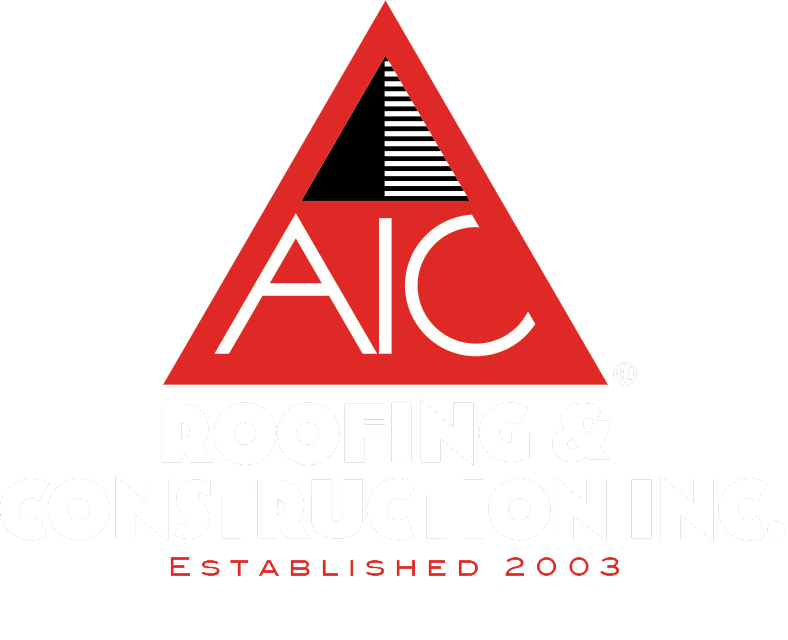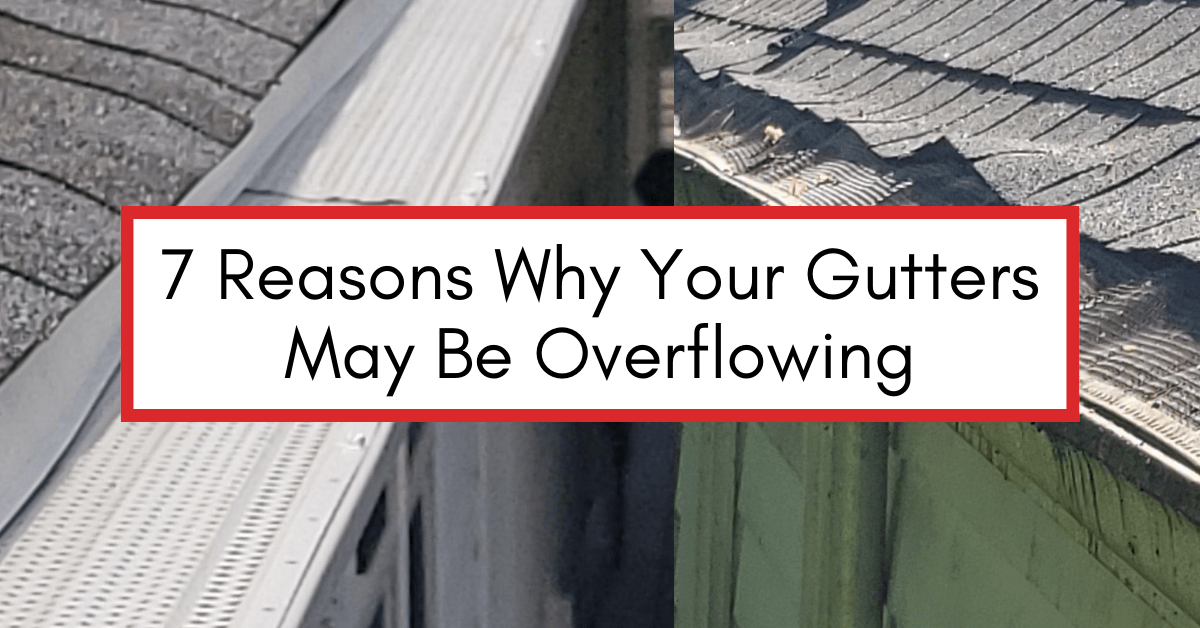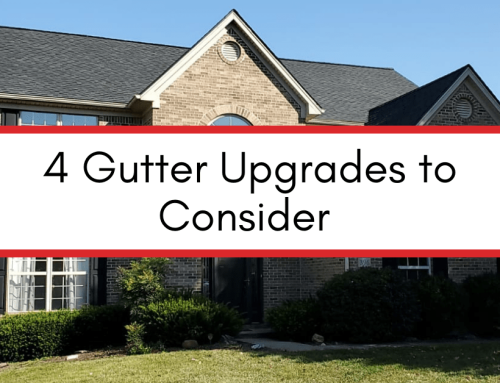Gutters are an essential part of your home’s drainage system. They serve an important purpose in protecting your home’s foundation, landscaping, and basement from water damage. Unfortunately, many homeowners overlook the importance of proper gutter maintenance, leading to overflowing gutters.
We want to help homeowners maximize the lifespan of their gutter system and educate them on the importance of a properly functioning roofing system. In this article, we will discuss possible reasons why your gutters may be overflowing and the consequences that can arise as a result.
Understanding the Importance of Gutters
Gutters play a crucial role in home maintenance, as they collect rainwater from your roof and direct it away from your home’s foundation. Without gutters, rainwater would flow directly off the roof and onto the ground surrounding your home, causing erosion and potential flooding. By effectively channeling water away from your home, gutters help to prevent costly damage and maintain the structural integrity of your property.
The Role of Gutters in Home Maintenance
Gutters act as a barrier, preventing water from pooling around your home’s foundation. When rainwater is not properly diverted, it can seep into the ground and make its way into your basement, leading to dampness, mold growth, and even structural issues. By directing water away from the foundation, gutters help to keep your basement dry and your home protected.
In addition to protecting your basement, gutters also play a vital role in preserving the overall condition of your home. Without gutters, rainwater would constantly be in contact with your exterior walls, windows, and doors. Over time, this constant exposure to moisture can lead to rotting, warping, and other forms of water damage. By channeling water away from the exterior of your home, gutters help to prolong the lifespan of your siding, windows, and doors, saving you money on costly repairs and replacements.
Furthermore, gutters also help to prevent soil erosion around your home. When rainwater flows off the roof without gutters, it creates a concentrated flow that can wash away the soil around your foundation. This erosion can lead to uneven ground, which can cause problems with your landscaping and even affect the stability of your home. By directing water away from the roof and onto the ground in a controlled manner, gutters help to prevent soil erosion and maintain the overall aesthetics of your property.
How Gutters Protect Your Home’s Foundation
One of the primary functions of gutters is to protect your home’s foundation from water damage. When rainwater is not properly channeled away, it can accumulate around the foundation, leading to cracks and potential structural instability. Over time, water damage can weaken the foundation, causing costly repairs and compromising the safety of your home.
In addition to preventing water accumulation, gutters also help to control the moisture levels around your foundation. By directing rainwater away from the foundation, gutters help to maintain a consistent moisture level in the soil surrounding your home. This is particularly important in areas with expansive clay soils, which can expand and contract with changes in moisture content. By preventing excessive moisture, gutters help to minimize soil movement and reduce the risk of foundation damage.
Gutters also play a role in preventing basement flooding. When rainwater is not properly diverted, it can seep into the ground and find its way into your basement. This can lead to water damage, mold growth, and a host of other issues. By effectively channeling water away from your home, gutters help to keep your basement dry and free from water-related problems.
Gutters are an essential component of any home’s exterior. They help to protect your foundation, prevent water damage, and maintain the overall condition of your property. By investing in high-quality gutters and ensuring proper installation and maintenance, you can safeguard your home from costly repairs and ensure its long-term durability.
Common Causes of Gutter Overflow
Clogged Gutters
One of the most common reasons for gutter overflow is clogging. Leaves, debris, and even birds’ nests can accumulate in the gutters, obstructing the flow of water. When the gutters are clogged, rainwater cannot properly drain, leading to overflow and potential damage. Regular gutter cleaning is essential to prevent clogs and ensure that water flows freely.
During the fall season, leaves from nearby trees can easily find their way into the gutters. As the leaves accumulate, they form a thick layer that prevents water from flowing through the gutter system. This can lead to water overflowing onto the roof, causing damage to the shingles and potentially leading to leaks inside the house.
In addition to leaves, other debris such as twigs, pine needles, and even small branches can get trapped in the gutters. These materials can create a dam-like effect, blocking the flow of water and causing it to spill over the sides. It’s important to regularly inspect and clean the gutters to remove any obstructions and maintain proper water flow.
Incorrectly Installed Gutters
Improper gutter installation can also contribute to overflowing gutters. If the gutters are not correctly angled or if they are not securely attached to the roofline, water may not properly flow into the downspouts. This can lead to overflow and ineffective drainage. It is important to hire an experienced gutter replacement professional to ensure that your gutters are installed correctly to avoid these issues.
When gutters are installed at the wrong angle, water can accumulate in certain sections instead of flowing towards the downspouts. This can result in an uneven distribution of water along the gutter system, leading to overflow in some areas while other parts remain dry. To prevent this, it’s crucial to have the gutters installed with the correct slope to ensure proper water flow.
In addition to the angle, the attachment of the gutters to the roofline is equally important. If the gutters are not securely fastened, they can become loose over time, especially during heavy rain or strong winds. Loose gutters can cause water to overflow and even detach from the roofline, posing a safety hazard. Proper installation with secure fasteners is essential to prevent these issues.
Gutters with Insufficient Capacity
In some cases, the gutters themselves may be the issue. If the gutter system is not designed to handle the volume of water your roof generates, it can quickly become overwhelmed. This can lead to overflow, especially during heavy rainfall. Upgrading to gutters with a higher capacity can help alleviate this problem and ensure proper drainage.
When determining the capacity of your gutter system, factors such as the size of your roof, the average rainfall in your area, and the slope of your roof should be taken into consideration. If the gutters are too small or if there are not enough downspouts to handle the water flow, overflow is likely to occur. Investing in gutters with a higher capacity can prevent this issue and provide adequate drainage for your home.
Additionally, installing gutter guards can also help increase the capacity of your gutters by preventing debris from entering the system. Gutter guards act as a barrier, allowing water to flow through while blocking leaves and other debris. This can reduce the frequency of clogs and minimize the risk of overflow.
The Consequences of Overflowing Gutters
Overflowing gutters can cause significant water damage to your home. When water overflows, it can seep into the roof, walls, and foundation, leading to rot, mold, and structural deterioration. The cost of repairing water damage can be extensive, making it crucial to address overflowing gutters promptly to prevent further damage.
But what exactly happens when water seeps into the roof, walls, and foundation? Let’s take a closer look. When water infiltrates the roof, it can damage the underlying structure, such as the wooden trusses or rafters. Over time, this can weaken the roof’s integrity, leading to leaks and potential collapse. Similarly, when water seeps into the walls, it can cause the paint to bubble and peel, create unsightly stains, and even compromise the structural stability of the building. And when water finds its way into the foundation, it can lead to cracks, shifting, and even the formation of sinkholes.
Erosion of Landscaping
When gutters overflow, the excess water can cause erosion in your landscaping. The force of the water can wash away soil, damage plants, and create unsightly gullies. This not only affects the aesthetic appeal of your property but can also lead to costly landscaping repairs. Keeping your gutters free of debris and ensuring proper drainage can help preserve your landscaping.
Imagine spending hours meticulously designing and maintaining your beautiful garden, only to see it washed away by overflowing gutters. The erosion caused by the excess water can uproot plants, destroy flower beds, and leave your once-lush lawn looking barren and patchy. Not only does this diminish the visual appeal of your property, but it also requires you to invest time and money into replanting and restoring your landscaping.
Basement Flooding
One of the most severe consequences of overflowing gutters is basement flooding. When water is not effectively directed away from the foundation, it can seep into your basement, causing damage to belongings, electrical systems, and structural elements. Basement flooding can be a costly and time-consuming issue to resolve, making it crucial to maintain your gutters to prevent this from happening.
Imagine walking down to your basement after a heavy rainstorm, only to find it filled with water. Your belongings, stored carefully in boxes, are now soaked and ruined. The water has also reached your electrical systems, posing a safety hazard and potentially causing electrical fires. In addition to the damage to your belongings and electrical systems, the structural integrity of your basement may be compromised, leading to costly repairs and renovations.
Reliable Gutter Replacement In Louisville, KY
Understanding the importance of gutters and the potential consequences of overflowing gutters is essential for every homeowner. By addressing the common causes of gutter overflow and implementing proper maintenance practices, you can prevent water damage to your home, protect your landscaping, and avoid costly repairs. Remember, regular gutter maintenance is key to ensuring that your gutters function effectively and keep your home safe from the damaging effects of water.
If your gutters aren’t functioning properly or you’d like a free inspection on your gutter system, contact us today!
3-tab attics barns chimney choosing a contractor commercial cost curb appeal DIY estimate financing flashing flat roof GAF glossary gutter replacement gutters gutter size gutter system ice dams inspections insurance missing shingles roof design roofing materials roofing system roof leak roof maintenance roof materials roof repair roof replacement roof shapes roof types shingle ratings shingles siding siding materials siding replacement skylights storm damage underlayment ventilation warranty winter







